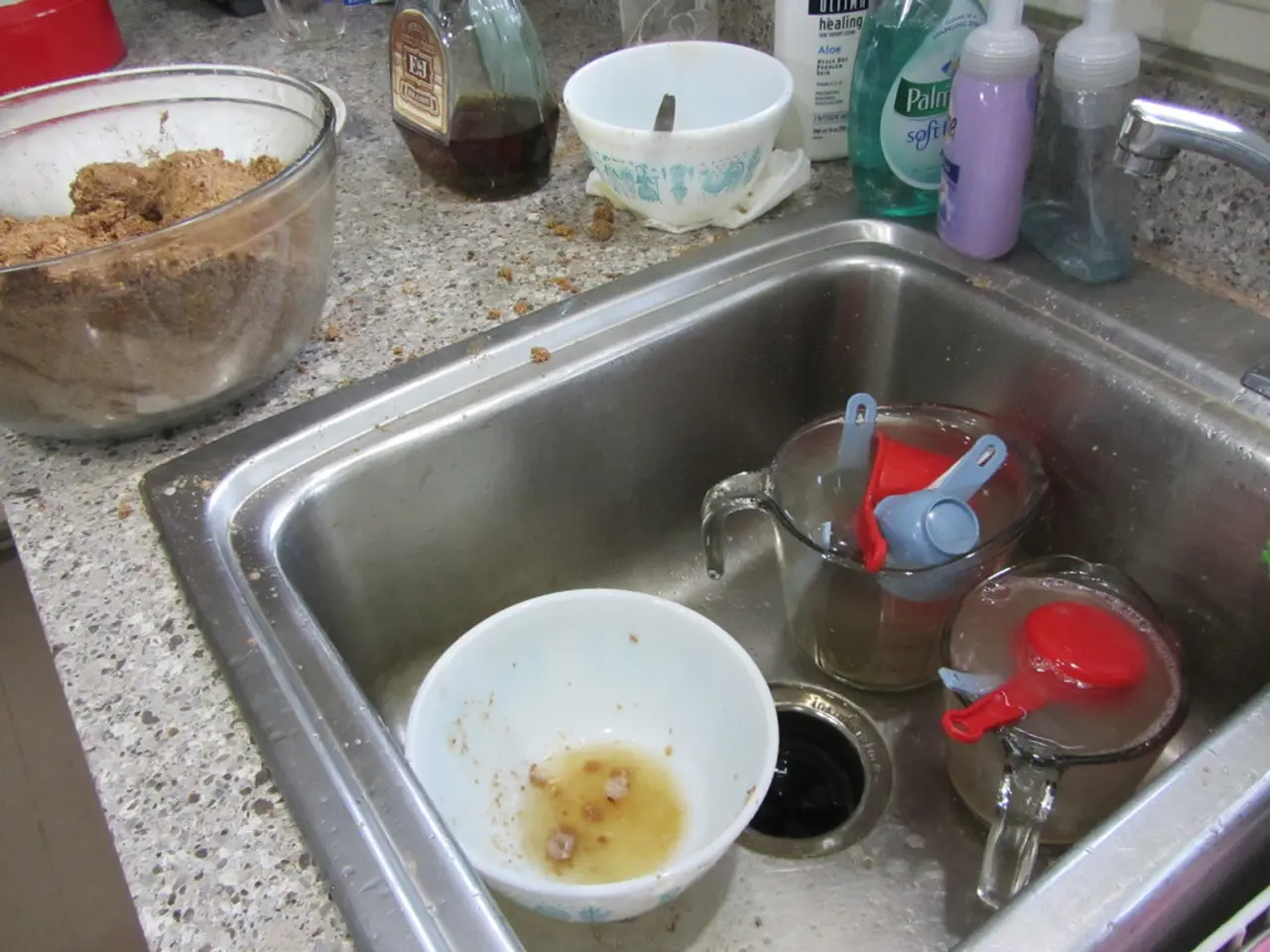Kitchen Essentials for Achieving Self-Sufficiency: Necessary Items for Your Cooking Independence
Achieving a Self-Sufficient Kitchen is Crucial for Those Aspiring for an Independent Lifestyle
For homesteaders and individuals aiming for self-sufficiency, the kitchen is undeniably the center of their home. This space becomes a sanctuary, where families are nurtured with home-cooked, nourishing meals, and countless hours are invested. Given the vast array of tools and gadgets available, understanding and prioritizing what is truly necessary is essential.
Before moving to their current property, one homesteader shares her experience of cooking in a small, cramped kitchen. Despite now having more cabinets and counter space, storage remains limited elsewhere in the house. In light of their self-sufficiency goals, she details the kitchen tools they have come to consider indispensable.
Essential Kitchen Tools
Knives
A high-quality set of knives is vital in any kitchen, especially for those who regularly butcher their own meat. These essential knives include:
- Boning knife: Ideal for removing bones from meat and different from a fillet knife.
- Bone saw: Practical and efficient for clean cuts without jagged edges when butchering.
- Butcher knife: Essential for cutting through large bones and meat pieces.
- Paring knife: Useful daily for peeling, chopping, and dicing.
- Chef's knife: Versatile, used for a variety of tasks from slicing to chopping.
- Serrated knife: Perfect for slicing bread and fresh produce.
Keeping Knives Sharp
Once the essential knives are obtained, it is imperative to keep them sharp. There are two methods for doing so:
- Sharpening Stones: Use a 20-degree angle and sharpen the knife by sliding it across the stone about five times on each side a few times a year.
- Honing Steel: Regularly use the honing steel to keep the knife's edges sharp, holding the knife at a 20-degree angle and sliding it across the steel about five times on each side.
Vintage Cast Iron Pans
Vintage or new cast-iron pans are both options, but there are differences. Vintage pans have a smoother surface and are generally lighter, with high-quality and longevity in mind. However, new pans are more porous and heavy.
Cast iron pans are incredibly versatile, suitable for cooking on a stove, in the oven, or even on a campfire. Old, rusted pans can be easily restored for better-than-new condition.
Dehydrator
Although they now prefer smoke-cured jerky, the dehydrator remains an essential tool for drying herbs, making fruit leathers, and preserving fruits and vegetables for extended shelf life. With a good dehydrator, home-preserved foods retain their nutritional value.
Kitchenaid Mixer
A Kitchenaid mixer is a worthwhile investment, with numerous uses including bread, desserts, whipped cream, and even homemade butter. The mixer is versatile, boasting multiple attachments for various tasks like pasta making and food grinding.
Vacuum Sealer
Although the use of plastic might not be ideal, a vacuum sealer is invaluable for keeping meat and frozen vegetables fresh for extended periods. It also excels at storing homemade bacon and cured meats.
Pressure Canner
The pressure canner is an indispensable tool for preserving meat, beans, vegetables, and other low-acid foods, particularly as gardens and hunting efforts expand.
Immersion Blender
With two immersion blenders (one for soap making, the other for food), it is a versatile tool for blending soups and sauces to a silky smooth consistency. Many models also come with a whisk attachment.
Kitchen Scale
Initially considered unnecessary, a kitchen scale has become an essential tool for measuring ingredients accurately, particularly for baking. It is also handy for measuring out packages of ground meat when butchering.
Cutting Boards
A quality cutting board is vital for all the knife work. Wooden boards are preferred as they are less damaging to knives than plastic or glass. With proper care, they will last a long time.
Canning Jars
No self-sufficient kitchen is complete without a good set of canning jars, lids, and rings. Whether you opt for reusable Tattler lids or new lids each season, choice is yours. Build your collection as needed, with flea markets and garage sales offering affordable, used jars.
Grain Mill
Freshly milled grains offer more nutrients and flavor than pre-milled flours, making a grain mill an excellent investment for home-grown crop users.
Proofing Basket
Ideal for bakers, particularly those working with sticky doughs, a proofing basket simplifies the process of proofing dough and cleanup.
Mortar & Pestle
Originally bought but left unused for years, a mortar and pestle found new life once the homesteader started cooking from scratch and growing their own food. Ideal for mashing garlic, making pesto, hummus, and even guacamole.
Carboys & Bottling Equipment
Starting home winemaking necessitates carboys and bottling equipment. A 1-gallon carboy is generally sufficient for most home winemakers.
Stock Pots
Large stock pots are necessary for making bone broths and cooking down large quantities of vegetables for canning. A smaller pot is handy for everyday use.
Fermenting Crock
For serious fermentation projects, a large fermenting crock is preferable.
The homesteader values quality tools that will serve them well for years to come. While keeping her belongings at a minimum, the kitchen is an exception due to its importance in the family's daily lives.
The homesteader suggests checking out "41 Ways to Become More Self Sufficient," "How to Use a Pressure Canner," and "8 Tips for Starting Your Homestead" for further guidance on building a self-sufficient kitchen and lifestyle.
- The dehydrator, an essential tool for homesteaders, is used for drying herbs, making fruit leathers, and preserving fruits and vegetables for extended shelf life.
- In the pursuit of self-sufficiency, a Kitchenaid mixer is a worthwhile investment, with numerous uses including bread, desserts, whipped cream, and even homemade butter.
- For preserving meat, beans, vegetables, and other low-acid foods, the pressure canner is an indispensable tool, particularly as gardens and hunting efforts expand.
- A vacuum sealer is invaluable for homesteaders, with uses including keeping meat and frozen vegetables fresh for extended periods.




